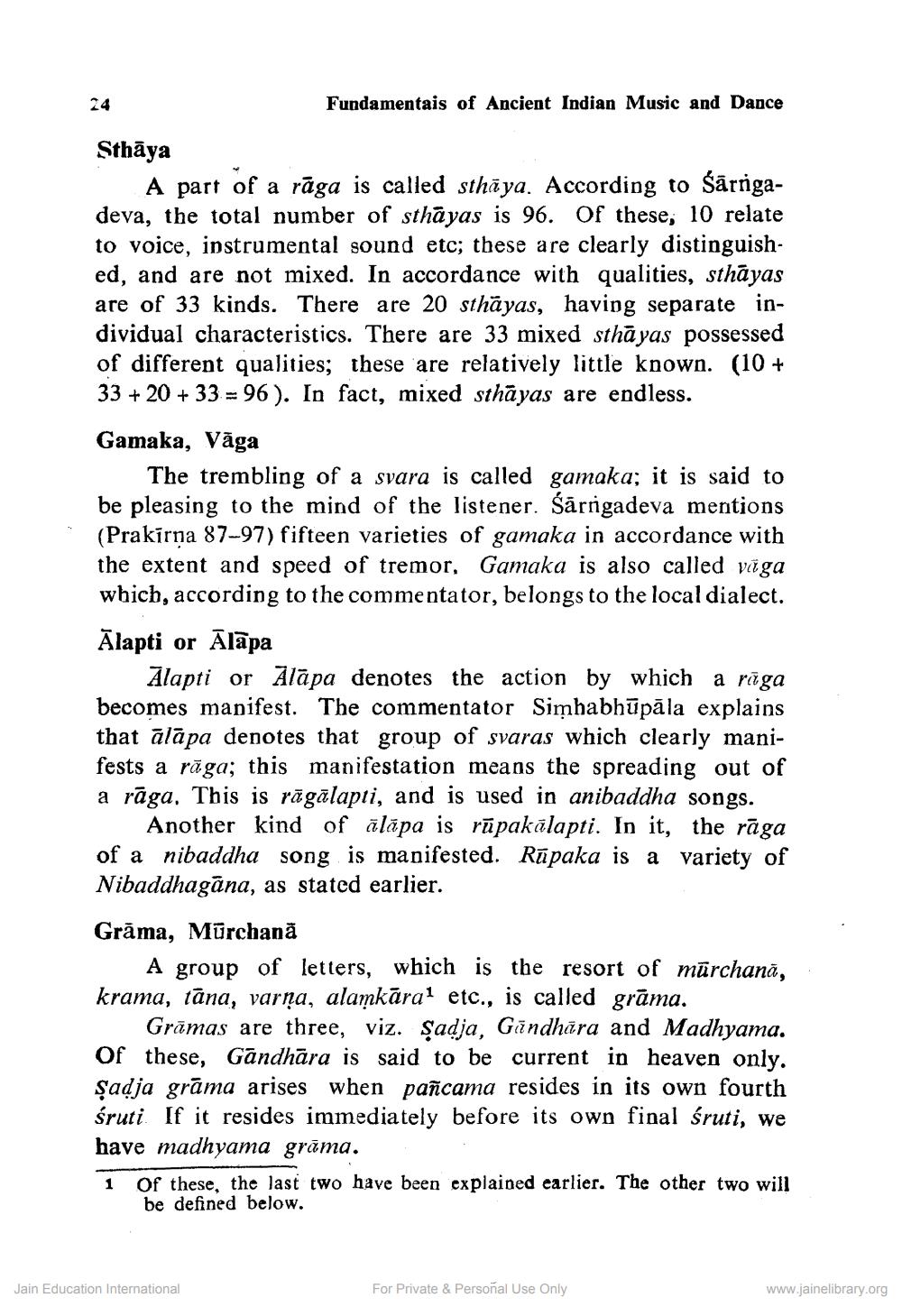________________
24
Fundamentais of Ancient Indian Music and Dance
Sthāya
A part of a rāga is called sthāya. According to śārnigadeva, the total number of sthāyas is 96. Of these, 10 relate to voice, instrumental sound etc; these are clearly distinguished, and are not mixed. In accordance with qualities, sthāyas are of 33 kinds. There are 20 sthāyas, having separate individual characteristics. There are 33 mixed sthāyas possessed of different qualities; these are relatively little known. (10 + 33 + 20 + 33 = 96). In fact, mixed sthāyas are endless. Gamaka, Vāga
The trembling of a svara is called gamaka; it is said to be pleasing to the mind of the listener. Śārrigadeva mentions (Prakirna 87-97) fifteen varieties of gamaka in accordance with the extent and speed of tremor, Gamaka is also called väga which, according to the commentator, belongs to the local dialect. Ālapti or Alāpa
Alapti or Alāpa denotes the action by which a rīga becomes manifest. The commentator Simhabhūpāla explains that ālāpa denotes that group of svaras which clearly manifests a rāga; this manifestation means the spreading out of a rāga, This is rāgālapti, and is used in anibaddha songs.
Another kind of ālāpa is rūpakalapti. In it, the rāga of a nibaddha song is manifested. Rūpaka is a variety of Nibaddhagana, as stated earlier. Grāma, Mūrchanã
A group of letters, which is the resort of mūrchanā, krama, tāna, varņa, alamkāral etc., is called grāma.
Grāmas are three, viz. Şadja, Gindhāra and Madhyama. of these, Gandhāra is said to be current in heaven only. şadja grāma arises when pañcama resides in its own fourth śruti. If it resides immediately before its own final śruti, we have madhyama grāma. 1 of these, the last two have been explained earlier. The other two will
be defined below.
Jain Education International
For Private & Personal Use Only
www.jainelibrary.org




